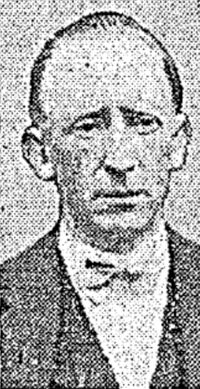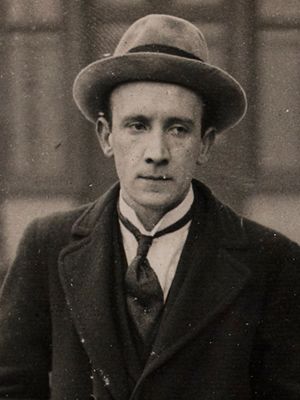Thomas F. O'Higgins facts for kids
Quick facts for kids
Thomas F. O'Higgins
|
|
|---|---|

O'Higgins in 1933
|
|
| Minister for Defence | |
| In office 18 February 1948 – 7 March 1951 |
|
| Taoiseach | John A. Costello |
| Preceded by | Oscar Traynor |
| Succeeded by | Seán Mac Eoin |
| Minister for Industry and Commerce | |
| In office 7 March 1951 – 13 June 1951 |
|
| Taoiseach | John A. Costello |
| Preceded by | Daniel Morrissey |
| Succeeded by | Seán Lemass |
| Leader of the Opposition | |
| In office 11 January 1944 – 9 June 1944 |
|
| President | Douglas Hyde |
| Taoiseach | Éamon de Valera |
| Preceded by | W. T. Cosgrave |
| Succeeded by | Richard Mulcahy |
| Teachta Dála | |
| In office February 1948 – 1 November 1953 |
|
| Constituency | Cork Borough |
| In office July 1937 – February 1948 |
|
| Constituency | Laois-Offaly |
| In office March 1929 – February 1932 |
|
| Constituency | Dublin North |
| Personal details | |
| Born | 20 November 1890 Stradbally, County Laois, Ireland |
| Died | 1 November 1953 (aged 62) Dublin, Ireland |
| Political party | Fine Gael |
| Spouse |
Agnes McCarthy
(m. 1915) |
| Children | 5, including Tom and Michael |
| Relatives |
|
| Education | Clongowes Wood College |
| Alma mater | University College Dublin |
| Military service | |
| Branch/service | National Army |
| Rank | Colonel |
| Battles/wars | Irish Civil War |
Thomas Francis O'Higgins (born November 20, 1890 – died November 1, 1953) was an important Irish politician and a medical doctor. He was a member of the Fine Gael political party.
He served as the Minister for Defence from 1948 to 1951. He was also the Minister for Industry and Commerce for a short time in 1951. From 1944 to 1944, he was the Leader of the Opposition. He was elected as a Teachta Dála (TD), which is like a Member of Parliament in Ireland, from 1929 to 1932 and again from 1937 to 1953.
After his father and brother were killed during the Irish Civil War in the 1920s, he became very involved in politics. He joined the Cumann na nGaedhael party. For a short time, he also led a group called the Blueshirts.
Contents
Early Life and Education
Thomas O'Higgins grew up in Stradbally, County Laois, in Ireland. He was one of sixteen children. His mother, Anne Sullivan, was the daughter of Timothy Daniel Sullivan, a famous Irish nationalist and poet.
His father's cousin, Tim Healy, was a well-known Irish politician. Healy later became the first Governor-General of the Irish Free State. Thomas grew up with his younger brother, Kevin O'Higgins, who also became a very important politician.
Thomas went to school in Stradbally and Maryborough (now Portlaoise). He also studied at Clongowes Wood College in County Kildare. He then went to University College Dublin to study medicine. He became a medical doctor in 1914.
While working as a doctor in County Kildare, he started helping the Sinn Féin party and the Irish Volunteers. In 1919, he was put in prison twice. He was held in Mountjoy Prison and the Curragh Camp. This was for helping to raise money for the first Dáil Éireann (the Irish Parliament).
O'Higgins became more and more well-known. In 1920, he became a Town Commissioner for Portlaoise. He was arrested again after leading a protest in Portlaoise. This protest happened after the death of Terence MacSwiney, a famous Irish leader. He was sent to Abercorn Barracks in County Down. During this time, his home in Portlaoise was taken over by the Black and Tans.
In 1921, he added "O" to his surname, becoming O'Higgins. Many people at the time did this. They believed they were bringing back old Irish names that had been changed long ago.
Joining the Army
O'Higgins supported the Anglo-Irish Treaty. This treaty created the Irish Free State. In 1922, he joined the National Army of the Irish Free State. This was during the Irish Civil War.
He was made a captain in the medical corps. He later became a high-ranking officer, a colonel, in charge of medical services.
A Family Tragedy
In 1923, Thomas O'Higgins' father was killed. This happened during a raid on his home.
Later, in 1927, his brother Kevin O'Higgins was also killed. Kevin was the Minister for Justice at the time. During the Civil War, Kevin had taken strong actions against those who opposed the treaty. He had approved death sentences for many captured opponents. These deaths were seen as a response to those actions.
Starting in Politics
After his brother's death, O'Higgins left the army. He decided to become a politician. He ran for the Cumann na nGaedheal party in 1929. He won a close election in Dublin North.
In the 1932 election, he ran in a different area, Leix–Offaly. He was elected again. He served as a TD for Laois–Offaly for sixteen years.
The Blueshirts Movement
The early 1930s were a time of strong political disagreements in Ireland. The Fianna Fáil party became the main opposition to Cumann na nGaedhael. They were very vocal in their opposition. The Great Depression also made things harder for the economy.
Fianna Fáil won the 1932 election. They released many political prisoners. Some of these prisoners and other groups were very angry with Cumann na nGaedhael. They started to disrupt meetings of the former government.
In response, former soldiers and supporters of Cumann na nGaedhael formed a group. It was called the Army Comrades Association (ACA), but it was better known as the Blueshirts. This group started to protect Cumann na nGaedhael meetings. They also got into street fights with their opponents.
In August 1932, O'Higgins was asked to lead the ACA, and he agreed. Under his leadership, the ACA became a strong right-wing movement. O'Higgins asked members to defend free speech and Christian values.
In 1933, Fianna Fáil called another election and won even more power. O'Higgins then handed over leadership of the ACA to Eoin O'Duffy. O'Duffy changed the group's name to the "National Guard." He also introduced uniforms and large public rallies.
In August 1933, the National Guard was banned by the government. Because of this, in September, the National Guard, another party, and Cumann na nGaedhael joined together. They formed a new party called Fine Gael. O'Duffy was made the leader. O'Higgins played a key role in forming this new alliance.
Becoming a Minister
O'Duffy did not stay as leader for long. He was replaced by WT Cosgrave. O'Higgins became the vice-president of Fine Gael. In 1936, he helped to reorganize the Blueshirts. He made them a direct part of the Fine Gael party. This helped to bring the Blueshirts into the main political system.
During World War II, O'Higgins supported James Dillon. Dillon wanted Ireland to join the Allies against the Axis powers. This was different from the party's official stance of neutrality.
In 1944, O'Higgins became the parliamentary leader of Fine Gael.
In the 1948 election, O'Higgins moved to a new area to run for election, Cork Borough. This allowed his son, Tom O'Higgins, to run and win in his old area. His other son, Michael O'Higgins, was also elected in the same election.
In 1948, Thomas O'Higgins joined the government led by John A. Costello. He became the Minister for Defence. He was also the Minister for Industry and Commerce for a few months in 1951.
Thomas O'Higgins passed away in 1953 while still serving as a TD.
Personal Life
On October 17, 1915, Thomas O'Higgins married Agnes McCarthy from Cork. They had four sons and one daughter.
See also
- Families in the Oireachtas
- Auditors of the Literary and Historical Society (University College Dublin)


